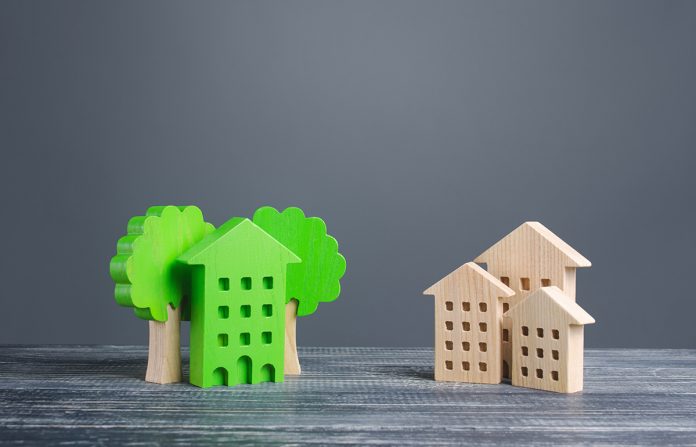The construction industry must prioritise the retrofitting of existing assets in order to meet carbon-cutting targets. Asite’s latest report examines how this can be achieved
The global warming of the planet, caused by carbon pollution, has resulted in an ever-growing need to invoke action for climate change mitigation.
Buildings, both in their operation and construction, currently account for the largest share (39%) of global energy-related carbon emissions, with operations emissions accounting for 28%.
With 80% of the homes that people will inhabit in 2050 already built and up to 75% of today’s buildings still expected to still be in use by 2050, the construction industry must prioritise retrofitting existing buildings at scale to meet energy-saving targets as outlined in the Paris Agreement.
Asite’s latest report, Smart Retrofitting: The Key to Decarbonising the Built Environment, examines how the construction industry can mitigate carbon emissions through the retrofitting of built assets, with a particular focus on residential and commercial buildings. Through a broad analysis of the deployment of technological solutions in this area, this report provides insight into the burgeoning role of digital twins in the industry’s journey to net zero.
Overcoming obstacles
While climate change is undoubtedly a global issue, the journey towards decarbonisation must take into consideration regional disparities. In developing countries, more than half of the building stock needed by 2050 has yet to be built, lessening their retrofit needs. For this reason, the onus of addressing energy consumption and greenhouse gas emissions related to the built environment lies with developed nations, where much of the future building stock is already in place.
However, issues prevalent within existing buildings, alongside a number of other barriers in these regions, are currently preventing the widescale retrofitting required to meet global decarbonisation targets. These obstacles range in complexity from country to country, ranging from financial and skills-based barriers to issues with ineffective building codes and overall underperforming buildings. While some progress has been made to overcome these obstacles, it is clear they still require additional and immediate action.
Is digital engineering the answer?
Digital engineering, including the tools and processes that it encompasses, could provide the answer to help bolster our efforts to reduce carbon emissions and overcome existing obstacles. Moreover, these technologies allow for greater network interconnectedness among regions, which is imperative to a global approach.
Establishing long-term circularity in the built environment, through the creation of a circular economy and the widespread use of material passports, will support the recovery and reuse of materials, which is a fundamental part of the retrofit process.
The integration of smart technologies will also help the industry meet decarbonisation targets. Smart buildings and smart grids, for example, both leverage information and communications technologies (ICTs) to gather activity data and allow components to “talk” to each other, as well as a central system, making buildings more efficient and reducing their environmental impact.
These transformative solutions that fall under digital engineering will bolster our efforts to reduce carbon emissions.
Digital twins and the future of retrofitting
While these technologies can transform individual processes and help the retrofitting process, using them together can have a more significant positive impact on a built asset.
A sophisticated amalgamation of multiple technologies, digital twins integrate data from several sources to provide an understanding of real-world conditions such as energy flows, environmental conditions, and material attributes. Simply put, they are a holistic monitoring resource for tracking an asset in real-time, which can help vastly improve the retrofitting process.
Examining the current use of a building, digital twins use IoT technologies that can track the individual components within a building over its lifecycle and collect data that can help identify inefficiencies and predict when maintenance is required. The digital twin also takes into consideration the human element of the built asset by tracking how it is used by its inhabitants, enabling building owners to make informed operational decisions.
Digital twin technologies offer long-term purpose and value to the sustainability of the built environment, both through their ability to track materials and properties within a building, allowing a more circular approach to construction, and to create an ecosystem within which data can be shared and communicated across boundaries. Digital twins can also be used as a simulation model, enabling building stakeholders to understand what-if scenarios, predict results more accurately and prepare their buildings for different events.
As a composite of a variety of technologies, digital twins offer the most comprehensive resource for retrofitting at scale, achieving current climate goals and futureproofing buildings beyond 2050 decarbonisation targets.
To read more about how digital twins can support the delivery of retrofits at scale and help the construction industry meet its decarbonisation goals, read Asite’s latest report Smart Retrofitting: The Key to Decarbonising the Built Environment, out now.
Asite
Tel: +44 20 7749 7880
Twitter: @ASITE
LinkedIn: Asite
Facebook: Asite Solutions
Instagram: Asite Solutions














